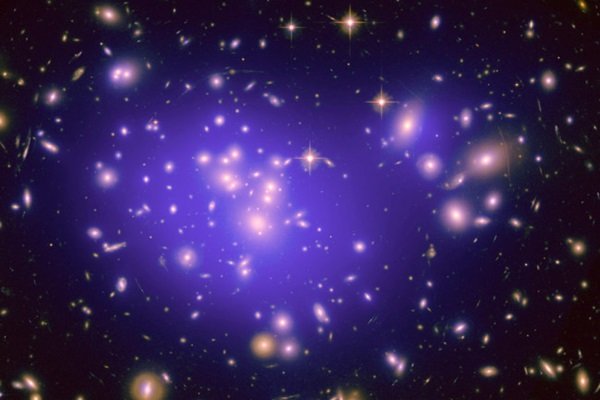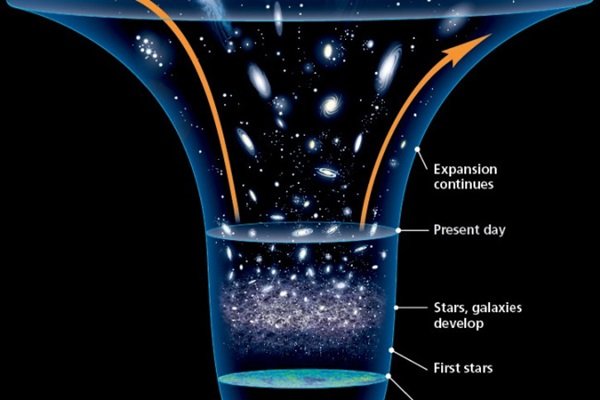The vast majority of our universe is hidden by not really trying to hide. In spite of the fact that we can't see or contact it, most astronomers say most of the universe comprises of dark matter and dark energy. However, what is this strange, undetectable stuff that encompasses us? Furthermore, what's the distinction between dark energy and dark matter? So, dark matter hinders the extension of the universe, while dark energy speeds it up.

Dark Matter
Dark matter works like an appealing power — a sort of infinite concrete that holds our universe together. This is on the grounds that dark matter associates with gravity, yet it doesn't reflect, ingest, or discharge light. Then, dark energy is a terrible power — such a repulsive force — that drives the universe's steadily quickening expansion.
We are considerably more certain what dark matter isn't than we are what it is. To begin with, it is dark, implying that it isn't as stars and planets that we see. Perceptions show that there is awfully minimal noticeable matter in the universe to make up the 27% needed by the perceptions. Second, it isn't as dark clouds of normal matter, matter comprised of particles called baryons. We know this since we would have the option to distinguish baryonic mists by their ingestion of radiation going through them. Third, dark matter isn't antimatter, since we don't see the exceptional gamma beams that are produced when antimatter annihilates with matter. At long last, we can preclude enormous system measured black holes based on the number of gravitational focal points we see. High convergences of matter curve light passing close to them from objects further away, yet we don't see enough lensing occasions to propose that such items to make up the necessary 25% dark matter commitment.
In any case, now, there are as yet a couple of dark matter prospects that are suitable. Baryonic matter could in any case make up the dark matter in the event that it were all tied up in earthy colored smaller people or in little, thick pieces of weighty components. These prospects are known as massive compact halo objects, or "MACHOs". However, the most widely recognized view is that dark matter isn't baryonic in any way, yet that it is comprised of other, more extraordinary particles like axions or WIMPS (Weakly Interacting Massive Particles).
Astronomers currently have numerous different lines of proof that recommend dark matter is genuine. Indeed, the presence of dark matter is so generally acknowledged that it's essential for the supposed standard model of cosmology, which frames the establishment of how researchers comprehend the universe's introduction to the world and advancement. Without it, we can't clarify how we arrived.
In any case, that grand status squeezes astronomers to discover conclusive evidence that dark matter exists and that their model of the universe is right. For quite a long time, physicists everywhere on the world have utilized progressively cutting edge instruments to attempt to identify dark matter. Up until now, they've discovered no indications of it.
Dark Energy
Dark energy is the undeniably more prevailing power of the two, representing approximately 68% of the universe's absolute mass and energy. Dark matter makes up 27%. Also, the rest — a measly 5 percent — is all the ordinary matter we see and communicate with consistently. On second thought, possibly it shouldn't be classified "normal" matter by any means, since it is a particularly little part of the universe.
One clarification for dark energy is that it is a property of space. Albert Einstein was the primary individual to understand that empty space isn't nothing. Space has astounding properties, a large number of which are simply starting to be perceived. The main property that Einstein found is that it is workable for more space to come into existence. At that point one variant of Einstein's gravity hypothesis, the rendition that contains a cosmological steady, makes a subsequent expectation: "empty space" can have its own energy. Since this energy is a property of space itself, it would not be weakened as space grows. As more space appears, a greater amount of this energy-of-space would show up. Subsequently, this type of energy would make the universe grow quicker and quicker. Tragically, nobody comprehends why the cosmological steady ought to try and be there, more less why it would have precisely the correct value to cause the noticed speeding up of the universe.
Another clarification for how space gains energy comes from the quantum hypothesis of matter. In this hypothesis, "empty space" is in reality loaded with brief ("virtual") particles that ceaselessly shape and afterward vanish. Yet, when physicists attempted to compute how much energy this would give empty space, the appropriate response came out wrong - wrong by a ton. The number came out multiple times too huge. That is a 1 with 120 zeros after it. It's difficult to find a solution that terrible. So the secret proceeds.
Astronomers have realized that our universe is growing for about a century now. Adjustable perceptions have shown that most systems are moving away from one another, which infers the worlds were nearer together in the removed past. Thus, the proof accumulated for the Big Bang. Notwithstanding, astronomers accepted that the joined gravitational draw of the relative multitude of universe's stars and worlds ought to hinder the universe's extension. Maybe it would even sometime fall back in on itself in a Big Crunch.

That idea was tossed out in the last part of the 1990s, in any case, when two groups of astronomers spotted something that didn't bode well. Scientist considering cosmic explosions in the most inaccessible worlds found that far off galaxies were moving away from us quicker than close-by galaxies. The universe wasn't simply growing — the extension was accelerating.
“My own reaction is somewhere between amazement and horror,“ astronomer Brian Schmidt, who led one of the two teams, told The New York Times in 1998. “Amazement, because I just did not expect this result, and horror in knowing that it will likely be disbelieved by a majority of astronomers — who, like myself, are extremely skeptical of the unexpected.“
Some hypothetical physicists believe there's a whole dark domain of particles and powers out there, simply holding back to be found. Whatever dark energy and dark matter are made of, they appear to be playing tug-of-war with our universe with both holding it together and pulling it apart.
Special thanks to
@krytodenno
@seo-boss
@earnxtreme
@chorock